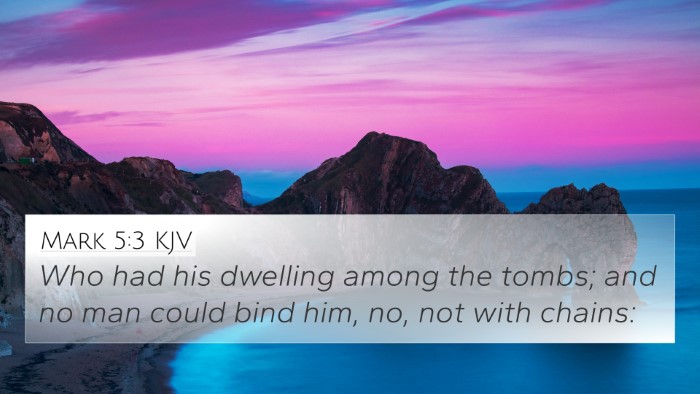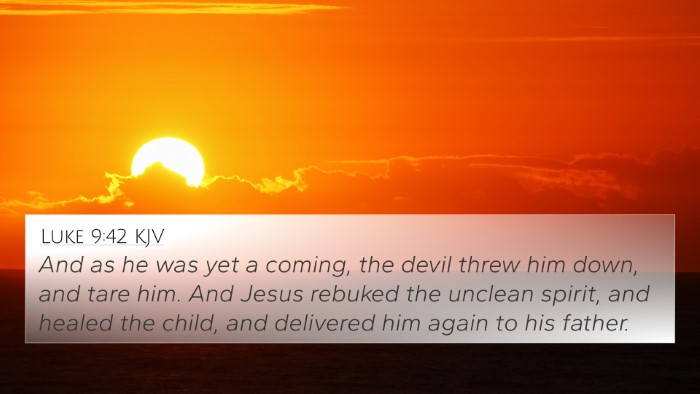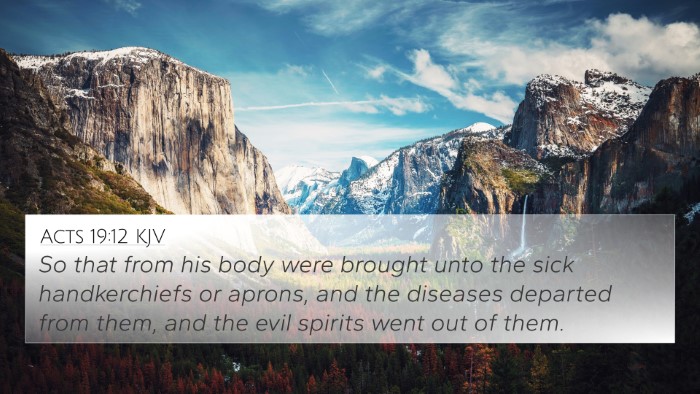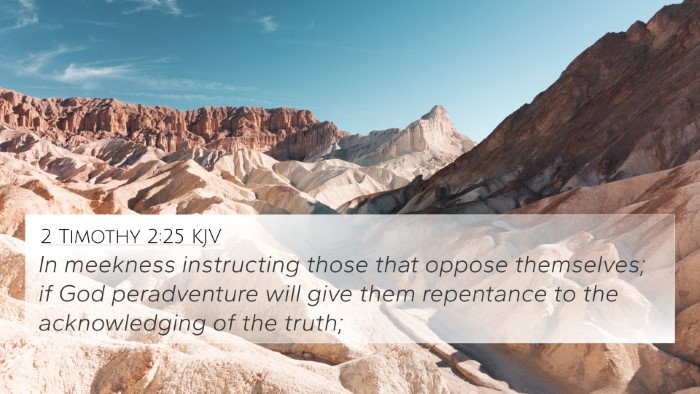Bible Verse: Luke 8:29
In Luke 8:29, the narrative describes the encounter Jesus has with a man possessed by demons in the region of Gerasenes. The verse reads:
"For Jesus had commanded the unclean spirit to come out of the man. For many times it had seized him. He was kept under guard and bound with chains and shackles, but he broke the bonds and was driven by the demon into the wilderness."
This passage contains profound theological implications and relates to several key Biblical themes including spiritual warfare, the authority of Jesus, and redemption. Below is a summarized analysis of its meaning based on insights from public domain commentaries by Matthew Henry, Albert Barnes, and Adam Clarke.
Meaning and Interpretation
Spiritual Oppression and Deliverance
Henry elaborates on the torment of the man possessed, emphasizing how the demons had taken control of his life. This indicates the severe impact of unclean spirits and the dire need for liberation.
Barnes notes that demonic possession can lead to an entire loss of self-control, which is highlighted in the way the man had been driven into the wilderness—symbolizing isolation from society and God.
Clarke further explains that the “unclean spirit” signifies not just a singular entity but a multitude, as referenced later in the verse. This underlines the intensity of the man's struggles with spiritual forces.
The Authority of Jesus
All three commentators affirm the centrality of Jesus’ authority in the passage. Henry remarks that the command Jesus gives is one of power and certainty, showcasing His divine capability to confront and expel evil.
Barnes adds that the chains were inadequate against the power of the demon, exemplifying that human efforts alone cannot subdue spiritual evil. The ensuing peace after Jesus' intervention highlights His supremacy over the forces of darkness.
Clarke insists that Jesus’ ability to command demons demonstrates His role as the Messiah, fulfilling Old Testament prophecies concerning the vanquishing of evil.
The Nature of Redemption
From a redemptive perspective, Henry discusses how this event illustrates the compassion of Christ. The liberation of the man serves as a metaphor for the salvation offered to all who are enslaved by sin.
Barnes confirms that the man’s return to sanity and societal acceptance represents a transformative act of grace that Jesus extends to all of humanity.
Clarke elaborates that spiritual deliverance through Christ brings restoration and healing, thus enabling the man to reintegrate into community life, echoing themes found throughout the Gospels.
Bible Cross References
Luke 8:29 can be cross-referenced with several significant passages that illuminate its themes:
- Mark 5:1-20 - The identical story of the Gerasene demoniac, conveying similar themes of possession and deliverance.
- Matthew 8:28-34 - Another account of Jesus’ authority over demons with shared elements from the narrative.
- Luke 4:33-36 - Jesus’ authority over unclean spirits is similarly demonstrated in a different context.
- James 4:7 - An exhortation to resist the devil, showing the power of believers following Christ's authority.
- Acts 16:16-18 - Paul’s encounter with a slave girl possessed by a spirit, reflecting the struggle between good and evil.
- Matthew 12:43-45 - Illustrates the return of unclean spirits and the need for vigilance in spiritual matters.
- Colossians 2:15 - Describing how Christ triumphed over powers and authorities, aligning with the victory seen in Luke 8:29.
- Romans 8:38-39 - The assurance of God’s love over all powers, speaking to the ultimate control God holds over evil.
- Revelation 20:10 - Future victory over Satan reflects the authority exhibited by Jesus in the New Testament.
- 1 John 4:4 - Affirmation that greater is He that is in you than he that is in the world, reiterating the themes of spiritual power and protection.
Thematic Connections
Understanding Luke 8:29 in the context of other scriptures allows us to appreciate the broader narrative of spiritual warfare throughout the Bible. The themes of evil’s presence, Christ’s authority, and the possibility of redemption echo extensively across both the Old and New Testaments.
Tools for Bible cross-referencing, such as a Bible concordance or cross-reference Bible study guides, enrich appreciation and deepen understanding of interconnected themes. These resources allow believers to explore how texts resonate with one another, identifying connections between Old and New Testament writings.
Conclusion
Luke 8:29 offers a profound glimpse into Jesus' compassionate authority over evil, reminding us of the great struggle between darkness and light. By examining cross-references, believers can explore the inter-Biblical dialogue that reflects God’s continual intervention in the world through Christ. Ultimately, the narrative speaks to the heart of the Gospel, representing hope for deliverance and restoration.
For anyone studying scripture, utilizing comprehensive Bible cross-reference materials further clarifies biblical themes that connect deeply with Luke 8:29 and enrich one’s faith journey.









